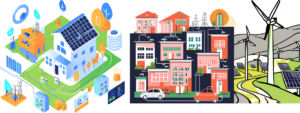
Latest Trends in Sustainable Energy: Powering a Greener Future
Shift towards Sustainable Energy As the world grapples with the urgent need to combat climate change, the demand for sustainable energy solutions has skyrocketed. Governments, corporations, and individuals are all searching for cleaner, more efficient ways to power homes, businesses,




